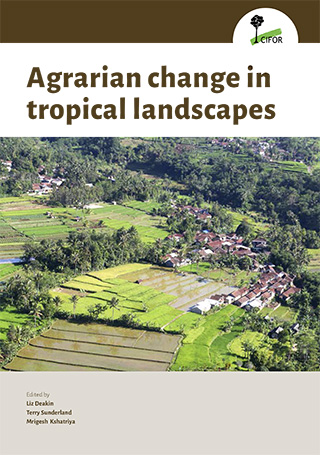Agrarian change in tropical landscapes
 Agricultural expansion has transformed and fragmented forest habitats at alarming rates across the globe, but particularly so in tropical landscapes. The resulting land-use configurations encompass varying mosaics of tree cover, human settlements and agricultural land units. Meanwhile, global demand for agricultural commodities is at unprecedented levels. The need to feed nine billion people by 2050 in a world of changing food demands is causing increasing agricultural intensification. As such, market-orientated production systems are now increasingly replacing traditional farming practices, but at what cost? The Agrarian Change project, coordinated by the Center for International Forestry Research, explores the conservation, livelihood and food security implications of land-use and agrarian change processes at the landscape scale. This book provides detailed background information on seven multi-functional landscapes in Ethiopia, Cameroon, Indonesia, Nicaragua, Bangladesh, Zambia and Burkina Faso. The focal landscapes were selected as they exhibit various scenarios of changing forest cover, agricultural modification and integration with local and global commodity markets. A standardized research protocol will allow for future comparative analyses between these sites.
Agricultural expansion has transformed and fragmented forest habitats at alarming rates across the globe, but particularly so in tropical landscapes. The resulting land-use configurations encompass varying mosaics of tree cover, human settlements and agricultural land units. Meanwhile, global demand for agricultural commodities is at unprecedented levels. The need to feed nine billion people by 2050 in a world of changing food demands is causing increasing agricultural intensification. As such, market-orientated production systems are now increasingly replacing traditional farming practices, but at what cost? The Agrarian Change project, coordinated by the Center for International Forestry Research, explores the conservation, livelihood and food security implications of land-use and agrarian change processes at the landscape scale. This book provides detailed background information on seven multi-functional landscapes in Ethiopia, Cameroon, Indonesia, Nicaragua, Bangladesh, Zambia and Burkina Faso. The focal landscapes were selected as they exhibit various scenarios of changing forest cover, agricultural modification and integration with local and global commodity markets. A standardized research protocol will allow for future comparative analyses between these sites.
